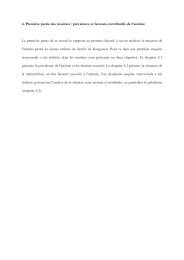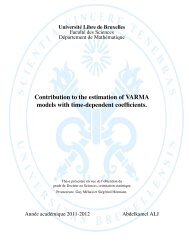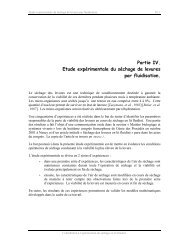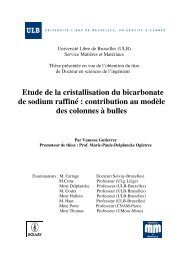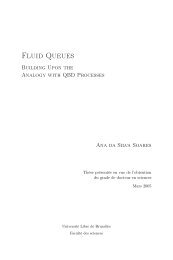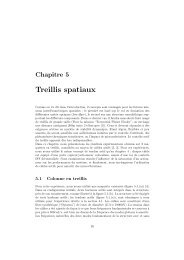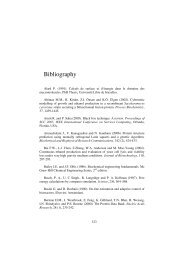Diapositive 1 - de l'Université libre de Bruxelles
Diapositive 1 - de l'Université libre de Bruxelles
Diapositive 1 - de l'Université libre de Bruxelles
Create successful ePaper yourself
Turn your PDF publications into a flip-book with our unique Google optimized e-Paper software.
Chapitre IIFigure 18: Skeletal Mn/Ca ratios vs Fe/Caratios indicating no influence on Mg/Ca ratiosby contaminating phases.Data analysis. All statistical analyses were carried out using the Systat 9 software.Significance level was fixed at 0.05. In or<strong>de</strong>r to control if experimental trace elementsignatures correspond to field ones, Mg/Ca and Sr/Ca ratios of the bulk skeletal pow<strong>de</strong>r ofthe field specimens were compared to experimental data obtained at a similar temperatureusing a Mann Withney test. The effects of temperature, salinity and growth rate on Mg/Caand Sr/Ca ratios were analysed using forward stepwise multiple linear regressions. Therelation between Mg/Ca ratio and temperature was further characterized by non linearregression. Analysis of residuals was systematically carried out. No significant trend wasever recor<strong>de</strong>d among residuals.RESULTSGrowth rate. During the experiment, sea urchins moved and ate actively. At the end ofthe experiment, the dissection revealed well-<strong>de</strong>veloped gonads with vivid colours andcalcein labelling evi<strong>de</strong>nced a significant growth attesting that sea urchins were healthy inall treatments.Mean growth rate of newly formed coronal plates was 0.163 ± 0.122 mg/day.Interindividual variation was important. This growth rate was not affected by temperature(p correlation = 0.24) nor salinity (p ANOVA = 0.60).Mg/Ca ratio. Mean skeletal Mg/Ca and Sr/Ca are presented in Table 8 (individual ratiosare <strong>de</strong>tailed in thesis annexes).53



